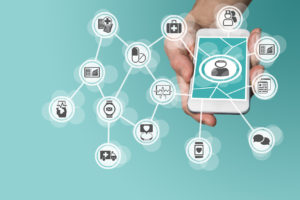
7 Key Aspects of Real-Time, Integrated ERP
 More and more small-to-midsize businesses are recognizing the value of real-time information that is enabled by cloud ERP systems. Further, many of these companies are adopting mobile/smart device strategies, thus enabling employees and executives to gain access to the information they need, when they need it.
More and more small-to-midsize businesses are recognizing the value of real-time information that is enabled by cloud ERP systems. Further, many of these companies are adopting mobile/smart device strategies, thus enabling employees and executives to gain access to the information they need, when they need it.
However, access to real-time information is not the only reason that companies are making this move. Real-time access delivers at least seven additional benefits that can help make a business more competitive in the contemporary marketplace.
1) Close financials in hours, not weeks or months
Because of regulations, as well as demands from customers and suppliers, many businesses are being pressured to accelerate their financial close cycles. In addition, forward-thinking business executives are demanding more information from their systems to help them make effective, timely decisions. On top of that, by having fully-integrated ERP, businesses are able to close financial cycles each month, rather than quarterly!
2) Fine tune business operations on-demand
The global economy never sleeps, and neither should your business! Company executives, thanks largely to mobile/smart devices, can be working 24/7. For a business to succeed, it can no longer operate on lengthy project-based cycles, or by using complex reporting requirements of the past. With integrated ERP, companies get faster, more complete reporting capabilities, as well as allow their business executives to assess and fine tune business plans on an ongoing basis. This enables executives to take corrective action, such as redeploying resources and modifying product strategies, in order to seize new opportunities as they arise, and thus delivering more revenue to the top and bottom lines, rather than having to wait to find out how these plans played out.
3) Access transactions anytime, from anywhere
Everyone has a smart phone, and most people have a tablet. Due to the wide adoption of these devices, there has been a surge in demand for easy-to-use mobile applications and web portals that are able to access enterprise applications. Because of this, employees from field service team members to key managers to stakeholders expect to be able to access the information and resources needed to get the job done, wherever they happen to be.
Integrated ERP systems like SAP Business ByDesign and SAP Business One have built-in support for mobile & web interfaces that enable delivery of timely information, as well as perform instant actions that are vital to stakeholders, even when they're off-site, on vacation, traveling, etc.
4) Create closer customer & supplier relationships
Real-time, integrated ERP has made the creation of new kinds of customer relationships possible. Until now, this wasn't possible with previous generations of technology. Today, the low cost of creating these relationships, made possible by automation and enhanced connectivity, makes it feasible to enable partnerships to be formed with customers and suppliers.
5) Personalize self-service offerings and transactions
One of the huge side benefits of increased access to real-time information has been the creation of self-service portals and applications. ERP systems, like SAP Business ByDesign, offer countless self-service options that enable businesses to reduce delays and overheads, as well as increase employee awareness and enhance customer satisfaction. This is especially true when employees, partners, customers, and suppliers can directly access needed information when they need it, from wherever they happen to be. Another benefit to self-service options is a business' ability to furnish up-to-date information regarding product availability and delivery schedules. When this is combined with real-time analysis and reports, it can streamline operations and enhance user experience by suggesting next steps, as well as cross and upsell opportunities.
6) Collecting real-time metrics remotely
As the marketplace has moved more to mobile and on-demand access, we have witnessed a large expansion in the types of data demanded and collected from the field. This has been made possible by the involvement of more smart-connected devices, such as barcode scanners, RFID tags, etc. Real-time, integrated ERP enables this data to be collected, matched to transactions, and presented in graphical, easy-to-read dashboards, thus enabling employees and executives to better track KPIs.
Remote access doesn't stop there, though. Products can be tracked after a sale is made, enabling a business to better track customer satisfaction, thus strengthening relationships with customers. Software vendors, like SAP, can also distribute upgrades and "hotfixes" to improve performance, then the information collected can then be automatically fed back into product development, in order to improve future models and enhance functionality.
7) Opens the door to innovation
Nowadays, successful enterprises must keep themselves ready to adapt to market change and seize opportunities to gain a competitive advantage via innovation. Rapid change in the global marketplace has become common. Companies that fail to innovate, quickly, will potentially find themselves floundering in the face of competition.
Because of this, a worthwhile ERP must be able to support a business' ability to quickly respond to changing conditions and emerging opportunities. Since this is largely contingent upon having access to real-time information, a business' ERP system must provide that same level of access.
To learn more about how Navigator & SAP deliver the above real-time access and much more, click here.